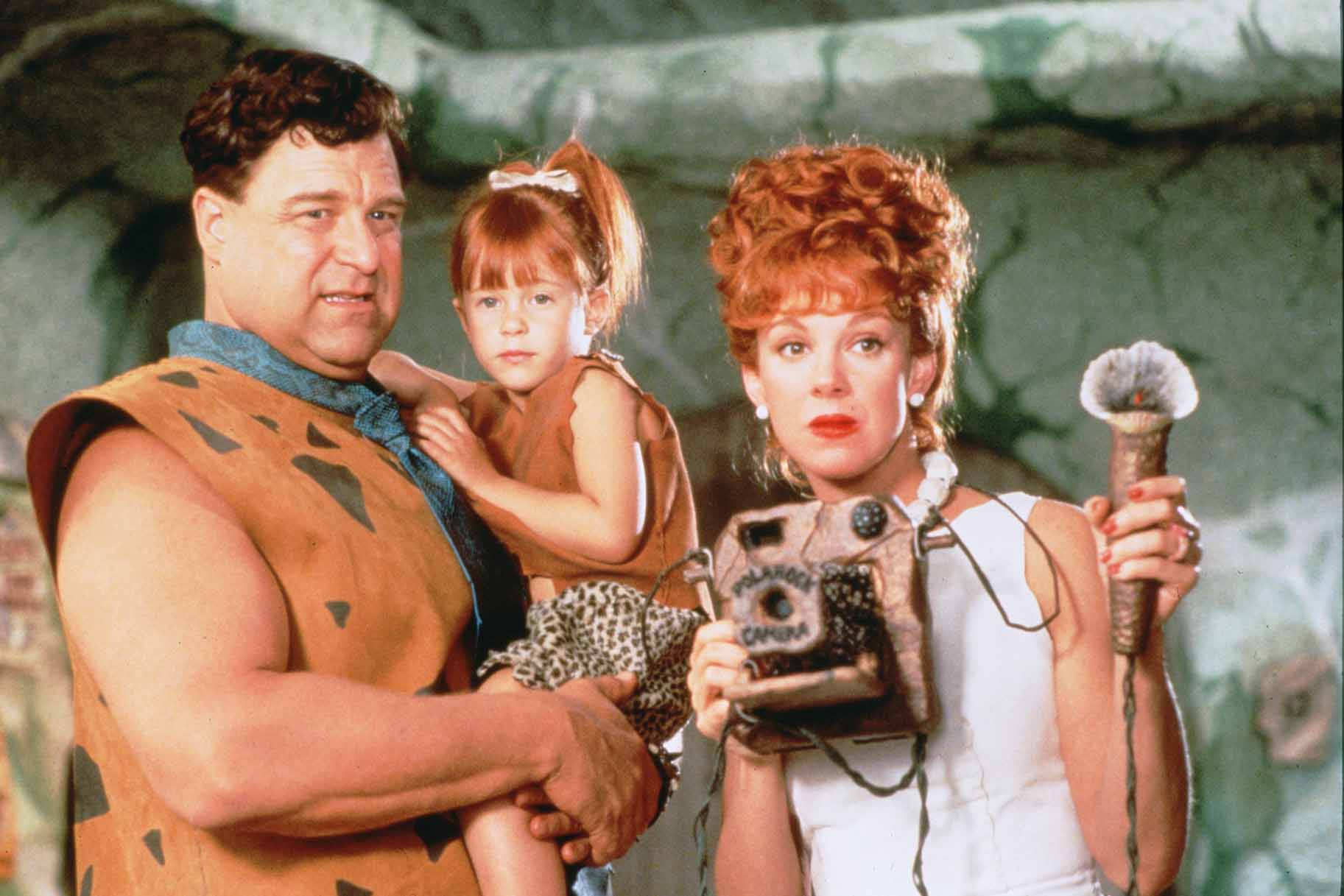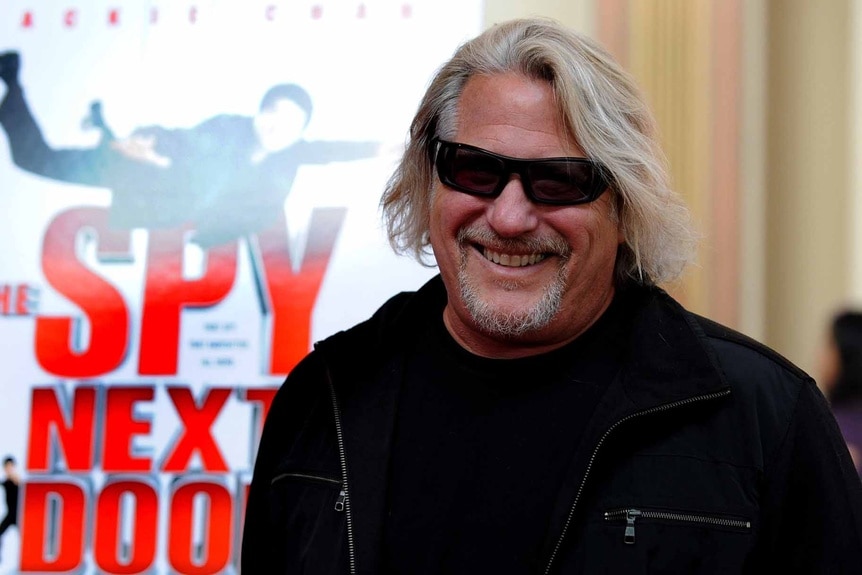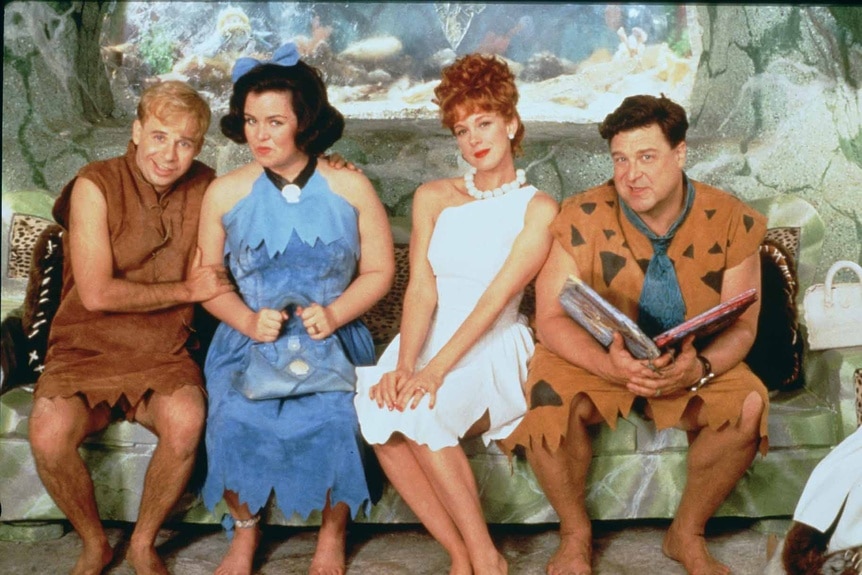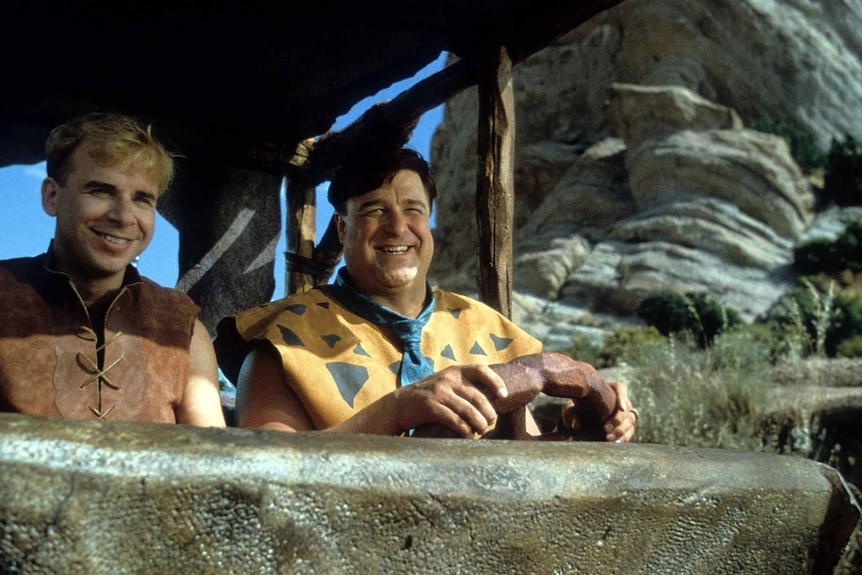Create a free profile to get unlimited access to exclusive videos, sweepstakes, and more!
The Flintstones at 30: Director Brian Levant On Bringing the Modern Stone Age Family into Live-Action
YABBA-DABBA-DOO!!!

In hindsight, Brian Levant may have been the only person capable of bringing The Flintstones into live-action with the 1994 feature film based on the iconic Hanna-Barbera cartoon (now available from Universal Pictures Home Entertainment). "Not only was I a huge fan of The Flintstones and animation, I absorbed it," the filmmaker, toy collector, and self-proclaimed "pop culturalist" tells SYFY WIRE over a Zoom call. "I spent an inordinate amount of time watching TV and was really on the path. At 4 years old, I have a note from my nursery school teacher saying, ‘Brian's gonna be a TV impresario!'"
That teacher's prediction came true and then some. Levant got his start on the small screen as a writer and producer for shows like Mork & Mindy, Happy Days, and The New Leave It to Beaver before moving on to the big leagues of feature filmmaking. "I've been very happy and surprised in some respects that my films seem to have embedded themselves in a generation very firmly," he says. "For that reason, they seem to have taken on a new life. Beethoven, Jingle All the Way, The Flintstones. Very honestly, that is the desired effect, [leaving] a young audience with something that they can use as a signpost of their growing up."
For More on Hanna-Barbera:
Scooby-Doo co-creator and Thundarr the Barbarian producer Ken Spears dies at 82
Scoob! director on those big end credit characters: 'They're ready to come in at any time'
Alex Toth and The Herculoids helped define science fiction in animation
Live-Action Flintstones Director Recalls How the Movie First Took Shape
After producer Joel Silver tried and failed to bring the modern Stone Age family to big screen for several years, the project landed at Amblin Entertainment. By this point, Levant had over a hundred episodes of television and two Universal Pictures comedies (Problem Child 2 and Beethoven) under his belt, which got him a meeting with producers Steven Spielberg and Kathleen Kennedy.
"I'm in a room with him and trying to convince him to pick me to do something that I knew in my heart I was closer to than probably anybody else they could find," Levant explains. "What I tried to project to them was a movie about real people living in a Flintstone world, a sitcom on steroids. It needed to be bigger and bolder and have things that recreated the awe and creativity that you first felt when you were exposed to these things."
What really got Spielberg on board with this vision was a Polaroid image of the director's personal collection of Flintstones-themed merchandise at the time, which comprised around "30-35 pieces," he recalls. "Pretty ordinary. Now I’ve got a whole room."
Once hired, Levant completely reworked the screenplay, which ended up containing input from over 30 people, including the director himself. The resultant narrative — and its treasure trove of rock-based wordplay — was essentially built from the ground up, but the general idea of Fred Flintstone being set up as corporate patsy by an embezzling Slate & Co. executive did survive from a previous draft. "That was it," Levant concedes. "Everything else, and how that was executed, came from us."
He continues: "You’re walking a tightrope. Is it too real to sustain, or is it too cartoony? You're always trying to find the right balance. And I think that’s really what we did achieve. So it doesn't really veer or teeter in one direction or the other. You accept the reality in the world and we did our best to sustain it."
John Goodman was Spielberg's top choice for the role of Fred ever since the two worked together on the 1989 film Always. Rick Moranis (Barney Rubble), Elizabeth Perkins (Wilma Flintstone), and Rosie O'Donnell (Betty Rubble) rounded out the main ensemble. Supporting players included Elizabeth Taylor as Wilma's critical mother, Pearl Slaghoople; and Kyle MacLachlan and Halle Berry as antagonists, Cliff Vandercave and Sharon Stone. "That was one of Steven’s jokes," Levant of says while mentioning Berry's character. Interestingly, Spielberg wanted the real Sharon Stone to play the steamy femme fatale, but she turned it down in favor of Mark Rydell's Intersection.
How Jurassic Park Influenced The Flintstones
By the time The Flintstones got underway, Jurassic Park was already in post-production, which meant Levant had access to a pair of individuals who had just helped Spielberg resurrect a menagerie of prehistoric beasts: cinematographer Dean Cundey and special effects supervisor Michael Lantieri. "When you're working with these top-flight people, it forces you to elevate your game," the director says.
Like Jurassic Park, The Flintstones employed a combination of CG and practical techniques for its plethora of Paleolithic creatures. Spielberg initially suggested the late Stan Winston for the puppet and animatronic side of things, but Levant felt Winston lacked the "whimsy" needed to capture the spirit of the original cartoon. "Him and his people were too realistic, too used to thinking about a different kind of effect."
Instead, he turned to Jim Henson's Creature Shop, the studio responsible for The Dark Crystal and Labyrinth. "As somebody who grew up watching puppet shows in the ‘50s, it reawakened something that had been lying dormant inside of me," Levant continues. "This magical ability to turn an inanimate object into a credible, living creature. And they had upgraded puppeteering. They had the Henson Control System, which was a complicated [system of] levers and buttons to activate the dozens of little servo motors that operated eyelids, mouths, lips, ears, beaks, wings — all these things. They were just so brilliant and facile in their ability."
Taking place between Los Angeles and Vasquez Rocks Natural Area Park, The Flintstones production is a page right out of Hollywood's pre-CGI history. "I think what we were most successful in doing was creating a world that honed to the parameters of The Flintstones world and made it much bigger, grander, tactile," Levant explains. "If it were made today, you would not have hundreds of technicians carving huge blocks of Styrofoam, making the huge buildings and housing development. It would all be CGI, there would be nothing but doors and floors. And that's really the shame, because we made over 6,000 props, costumes, sets, cars. Everything from toilet paper to Slate and Co. The design process was so invigorating and tremendously challenging and fun."
Even Flintstones creators William Hanna and Joseph Barbera couldn't believe their eyes while taking an early tour of the sets on the Universal backlot. "When they walked into the stage and saw their world coming to life, all of a sudden, there was all these old married couple looks between them," Levant remembers. "They're smiling and every artist on the set was so thrilled to see them ... Finally, we walked out of the last stage, into the daylight, and Joe Barbera shook his head and said, ‘Never in my life did I ever expect to see anything like that.'"
Why Didn't The Flintstones: Viva Rock Vegas Bring Back the Original Cast?
The Flintstones turned out be a dino-sized hit, grossing just over $341 million worldwide against a budget of $46 million. Naturally, the next step would be to green-light a sequel. In fact, Universal Pictures wanted two follow-ups that would be shot back-to-back — à la Back to the Future Parts II and III. There was just one problem: John Goodman wanted no part of it. "I think it came down to one thing: people coming up to him in airports and going ‘Yabba-dabba-doo!’ He didn’t like it," guesses Levant. "I can really see him going to Steven and saying, ‘Please don't make me do any more of these!’ But it would have been worth a hefty paycheck."
And so, the sequel was retooled into a prequel, subtitled Viva Rock Vegas, which Levant originally envisioned as a "full-blown musical," though the studio wasn't too hot on the idea. "We did manage two or three musical numbers," he adds, "but [it was] a far cry from what I think it could have been." Released on April 28, 2000 — almost six years after the original — the prequel featured an an all-new ensemble of actors: Mark Addy (Fred), Stephen Baldwin (Barney), Kristen Johnston (Wilma), and Jane Krakowski (Betty). In addition, Alan Cumming (future host of Peacock's The Traitors) joined the prehistoric party as The Great Gazoo.
Unfortunately, The Flintstones: Viva Rock Vegas failed to match the commercial success of its predecessor, grossing just shy of $60 million globally on a pricey budget of $83 million. "That's pretty disappointing," the director laments. "It was too many years later, I think, and the surprise element was gone."
When we ask where the unmade trilogy capper would have gone, Levant states that he and the production team "never got that far" into the brainstorming process. Struck by a sudden inspiration, the director adds: "We probably would have gone out West in the tradition of [Buster] Keaton, the Marx Brothers, [and] The Three Stooges. The Flintstones did do an Old West show."
What's Next for The Flintstones Franchise?
Beyond a direct-to-video crossover with the WWE and a short-lived spinoff aimed at kids, The Flintstones IP has lain strangely dormant since the release of Levant's feature films. In 2013, Ted maestro Seth MacFarlane attempted to reboot the cartoon, which ultimately fizzled out. Almost a decade later, we learned of an adult-oriented Flintstones project entitled Bedrock, which would center around a fully-grown Pebbles voiced by Elizabeth Banks. Last we heard, the series is still in active development, with Stephen Root (Fred), Amy Sedaris (Wilma), Nicole Byer (Betty), Joe Lo Truglio (Barney), and Manny Jacinto (Bamm-Bamm) rounding out the principal voice cast.
And what of the franchise's future on the big screen? Last summer, it was confirmed The Super Mario Bros. Movie co-directors Aaron Horvath and Michael Jelenic would helm an animated origin flick called Meet the Flintstones.
While Levant remains as committed as ever to the modern Stone Age family, the filmmaker fears that many young people today only see Bedrock's prodigal family as shallow mascots. "[For] a lot of kids today, The Flintstones are a brand. They're no longer a recognizable franchise, they’re vitamins, they’re cereal. Hopefully, through the expanded streaming world, people will continue to find out that it's not just something your mother makes you take every morning."
The Flintstones and Viva Rock Vegas are now available to own from Universal Pictures Home Entertainment.

















